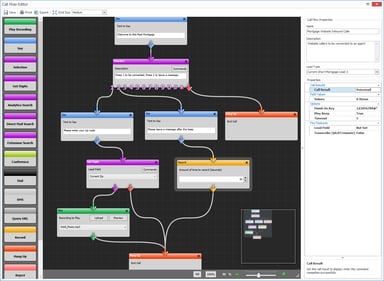How To Use Inbound Call Tracking & Routing To Accelerate Sales Wins
Have you ever thought about refinancing your home? If you have, I bet you performed a Google search for rates, found a good company, and got to that one part of the landing page where you stopped.
“Wait a second; I will give them my information, and they will never stop calling me? Worse, they might sell my data, or they might get hacked, and now my data just got sold to other companies.” After the panic subsides, you think it will be much safer if you just call them from your cell; if they bug you, you can at least block their number in the future, and you will not willingly give them your data unless you like what they have to offer.
This thought process is typical and why you should include call tracking and call routing in your omnichannel communication experience for your prospects. You might not lose that customer if they can call you and get to a salesperson quickly.
Not only is this a better experience for your customers, but it is also part of a broader strategy to keep your sales floor active and your salespeople engaged. Nothing is worse than running a sales team where the phone never rings. Sure, there are plenty of companies that only focus on outbound sales or have a dedicated team that handles inbound calls. Still, you have to implement call tracking – full stop – or risk wasting valuable marketing dollars to drive potential customers to your site, where they panic and call a company that responds to them via phone or text.
Call routing solutions enable the rapid connection between an interested buyer and your salespeople or sales teams. Typically these solutions will involve routing based on geography and keypress options. The call routing solution should also provide options for how calls are distributed to your salespeople. The two most common types of call routing are round-robin and shotgun. Typically these solutions are provided by your telco provider, but more recently, sales software solutions (like ClickPoint) have begun offering these solutions as part of your sales software by way of integration. The benefits of having a solution like this integrated into your sales software are manyfold. Much better metrics around call conversion is just one of them. By going with your telco provider, you can get total calls, talk time, etc. but you will not quickly or easily get to your conversion data unless your telco integrates into your sales solution.
It’s vital that you think this through and do not settle. Nothing is worse than data that is not timely or actionable. The other benefit of having call tracking integrated into your sales software is the ability to do some incredible things like screen pops and direct mail conversion tracking. A screen pop means when a salesperson receives a call, it will automatically pop a screen to record the customer information. Most solutions will present a name, address, and necessary information with a reverse 411 lookup. This process helps you get valuable information on an inbound call that would have been scribbled on a piece of paper without this solution. With direct mail, you can track the number of inbound calls, even going as far as monitoring call volume and conversion rates directly from your sales solution.


